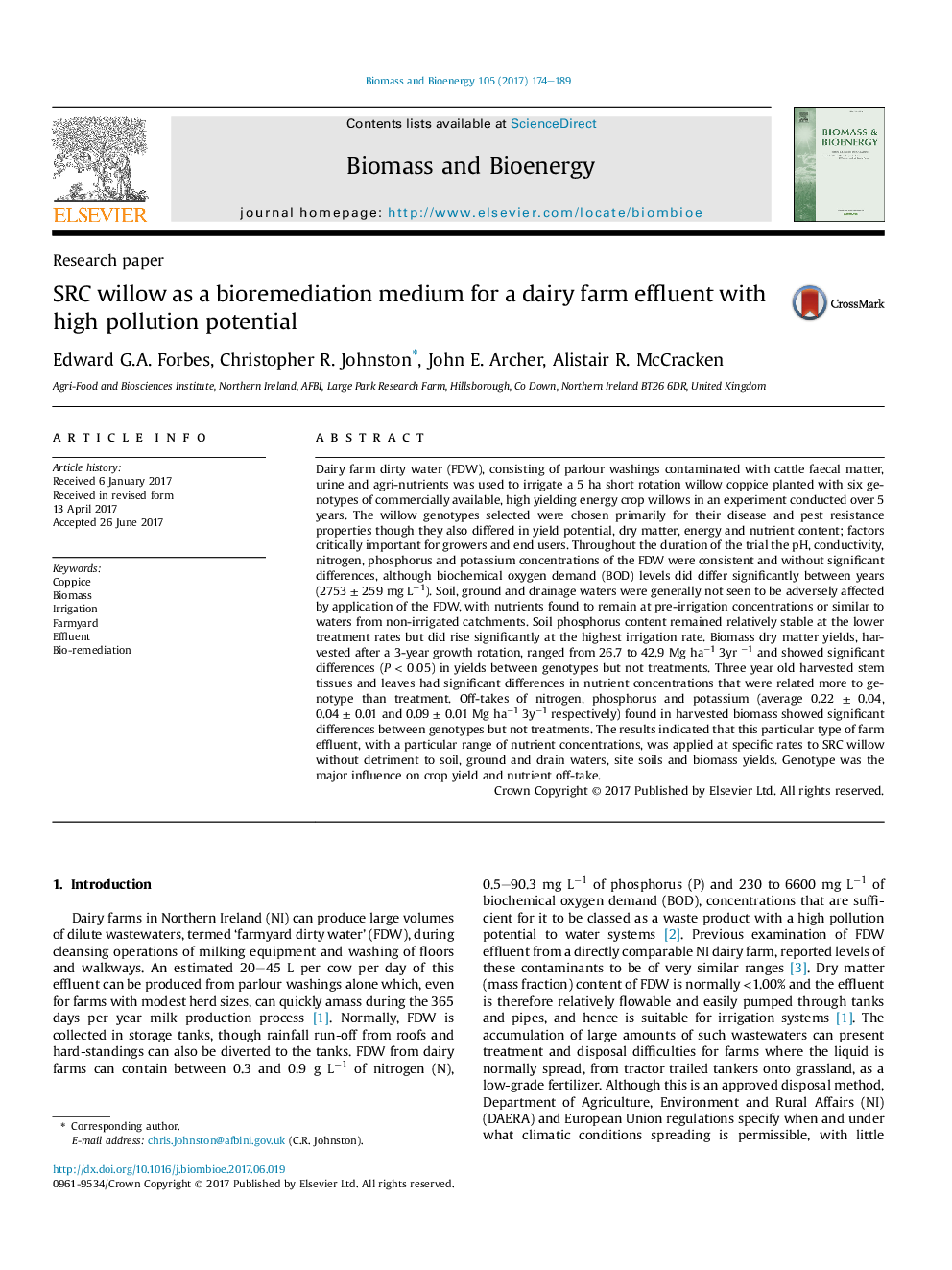| Article ID | Journal | Published Year | Pages | File Type |
|---|---|---|---|---|
| 4996156 | Biomass and Bioenergy | 2017 | 16 Pages |
Abstract
Dairy farm dirty water (FDW), consisting of parlour washings contaminated with cattle faecal matter, urine and agri-nutrients was used to irrigate a 5 ha short rotation willow coppice planted with six genotypes of commercially available, high yielding energy crop willows in an experiment conducted over 5 years. The willow genotypes selected were chosen primarily for their disease and pest resistance properties though they also differed in yield potential, dry matter, energy and nutrient content; factors critically important for growers and end users. Throughout the duration of the trial the pH, conductivity, nitrogen, phosphorus and potassium concentrations of the FDW were consistent and without significant differences, although biochemical oxygen demand (BOD) levels did differ significantly between years (2753 ± 259 mg Lâ1). Soil, ground and drainage waters were generally not seen to be adversely affected by application of the FDW, with nutrients found to remain at pre-irrigation concentrations or similar to waters from non-irrigated catchments. Soil phosphorus content remained relatively stable at the lower treatment rates but did rise significantly at the highest irrigation rate. Biomass dry matter yields, harvested after a 3-year growth rotation, ranged from 26.7 to 42.9 Mg haâ1 3yr â1 and showed significant differences (P < 0.05) in yields between genotypes but not treatments. Three year old harvested stem tissues and leaves had significant differences in nutrient concentrations that were related more to genotype than treatment. Off-takes of nitrogen, phosphorus and potassium (average 0.22 ± 0.04, 0.04 ± 0.01 and 0.09 ± 0.01 Mg haâ1 3yâ1 respectively) found in harvested biomass showed significant differences between genotypes but not treatments. The results indicated that this particular type of farm effluent, with a particular range of nutrient concentrations, was applied at specific rates to SRC willow without detriment to soil, ground and drain waters, site soils and biomass yields. Genotype was the major influence on crop yield and nutrient off-take.
Related Topics
Physical Sciences and Engineering
Chemical Engineering
Process Chemistry and Technology
Authors
Edward G.A. Forbes, Christopher R. Johnston, John E. Archer, Alistair R. McCracken,
